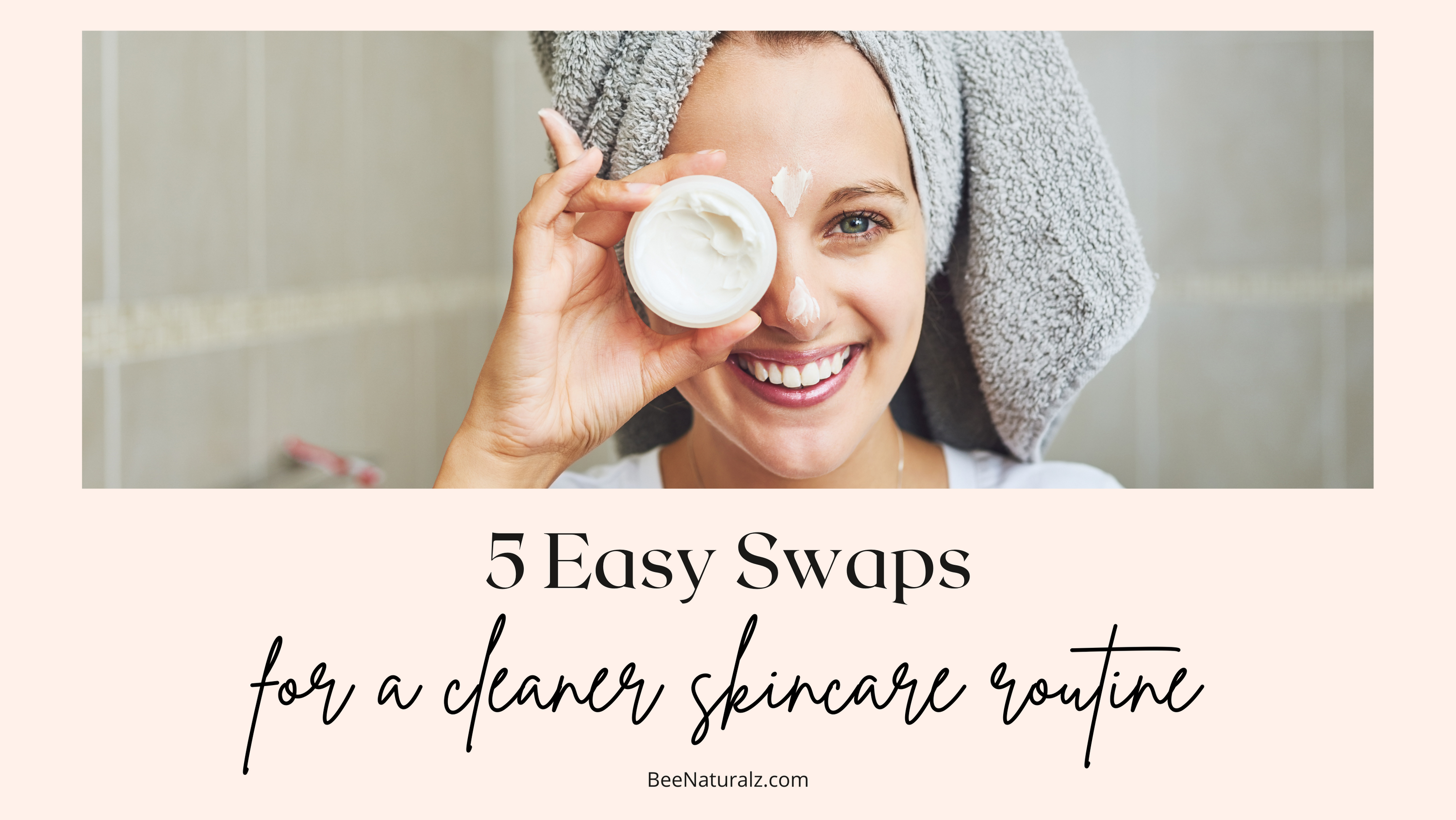1,623. That's the number of chemical ingredients banned by the European Cosmetic Commission. Here in the U.S. that number of banned ingredients (by the FDA) drops to 11.
Read that again: ELEVEN.
That means there’s still over 1600 ingredients that manufacturers can add to your skincare products that are known for causing irritation or other issues.
I know that sounds scary. And it kind of is. Which also makes it really easy to get overwhelmed with all of the labels that we encounter (especially since we should also be paying attention to the labels of the food that we consume, the household products that we use, etc.). It's enough to make your head spin.
And that's pretty much what many manufacturers are hoping for, and why ingredient lists are typically printed very small and often hidden in the most creative ways. Out of sight, out of mind. Even brands that use the term "natural" will often only highlight the natural ingredients that they do use, while tucking in synthetic or harmful ingredients on their actual label (and they expect consumers to not read too far into it).
So where does that leave us as consumers?
The best thing you can do to start the journey is to become more aware of the ingredient labels for the products you use, and become an educated consumer by doing research. A fantastic resource on ingredients and products is the Environmental Working Group (EWG). They provide an excellent space for being able to research ingredients and make informed choices.
With time, as more and more consumers become aware of this and start to make safer, more natural choices, the consumer market actually starts to make the shift too. Have you noticed lately how you hear more and more about companies making the shift to cleaner ingredients and label transparency? It's not by accident or coincidence - that is a direct result of consumers using their voice (in the form of shifts in purchasing decisions and advocacy) to shift the market and make more and more companies pay attention to what their customers are demanding. We'll save our consumerism rant for another day, but you get the idea!
This may sound complicated and that one simple choice won't make a difference, but it does. And if shifting broader consumer choices sounds out of reach - that's ok, just start with your own skincare routine. Switching up your routines for cleaner products definitely doesn't have to be hard.
Here are 5 simple swaps for your skincare routine to get you started on the right path!
Swap #1
Lip Products
We consume or absorb about 90% of everything that touches our lips. Most of us don't think twice about grabbing a tube of chapstick and lathering up with it to protect our lips from the sun or cold weather - but the reality is that we should give pause. For example, take a look at the list of ingredients below.
White petrolatum, arachidyl propionate, camphor, carnauba wax, acetyl alcohol, fragrance, isopropyl lanolate, isopropyl myristate, lanolin, lemon oil, light mineral oil, maltol, methylparaben, octyldodecanol, paraffin, phenyl trimethicone, propylparaben, red 6 lake, saccharin, white wax.
If you're keeping count that's 20 ingredients for one very basic lip balm from a very well-known lip balm company. To be clear, some of the ingredients like carnauba wax, camphor, lemon oil, and lanolin, are perfectly natural and harmless.
But that leaves plenty of other questionable ingredients on the table. Most are synthetic, though relatively harmless. However some are very questionable, like the white petrolatum (petroleum), methylparaben (a paraben with strong evidence of being an endocrine disruptor), and mineral oil (with evidence of immune system toxicity). Not to mention, red 6 lake which can be very irritating for skin and trigger allergic reactions.
Clean swap: Opt for lip balms with a short list and familiar ingredients, such as beeswax, coconut oil, shea butter, and the like.
Swap #2
Acne Treatments
There are a lot of chemicals on the market for treating acne. And as someone who had chronic acne since the age of 13, I can attest that the struggle is real.
One of the most common ingredients out there is benzoyl peroxide, and depending on concentration levels it can be some real harsh stuff. During one of the attempts early on to clear up my acne I was prescribed a benzoyl peroxide treatment by a dermatologist - and it nearly ate my face off. I kid you not. It peeled, and it hurt, and it was AWFUL. It wouldn't be until about 20 years later that I discovered that harsh doesn’t mean better. In fact, it can actually make acne worse. Harsh chemicals in acne treatments can vary, but typically "work" by killing off bacteria and drying up the skin around the affected area. But what typically happens is it dries your skin too much. And when your face gets overly dry, your skin's natural sebacious glands start to produce excess amounts of sebum (oil) to combat the dryness. Too much oil production then creates a brewing ground for even more acne. And so begins the vicious cycle. This is a one scenario where "more" is definitely not "better".
Clean swap: Look for natural acne treatments that contain ingredients like tea tree essential oil, willow bark, raw honey, and turmeric. These are natural skincare ingredients that are widely known for healing acne, but that won't cause your skin to freak out and produce too much oil. Raw honey in particular is naturally antibacterial and antifungal, Not only are these ingredients far safer, but they are going to be even more effective in the long run.
Swap #3
Deodorant
This one should probably not surprise you - even major brands are starting to realize that consumers want a more natural option, and that the evidence against the harmfulness of ingredients in regular deodorants is stronger than ever. Remember what we said earlier about consumer demand driving market changes? This is a perfect example of that. The most common issue with regular deodorants is when they are combined as an anti-antiperspirant. These are the offenders that contain aluminum which is linked to all sorts of issues when it's absorbed into your skin.
When looking for a clean swap, remember to look beyond the buzz words like "natural" and "aluminum free". Just because those are highlighted does not mean that the manufacturer hasn't left in other harmful ingredients (such as parabens, phthalates, synthetic fragrances, and more).
Here’s the thing to remember with natural deodorants: you will still sweat. That is a natural bodily function and blocking that can block the body's natural function of releasing toxins. Instead, focus on neutralizing the scent that comes from sweat, and look for ingredients like arrowroot powder and magnesiums hydroxide that help to absorb sweat and neutralize the funk.
Clean swap: Natural deodorants that actually hold up to their claim of being clean and natural. Ingredients such as magnesium hydroxide (a naturally occurring compound), is an effective ingredient for helping to neutralize odor-causing bacteria naturally.
Swap #4
Retinol Treatments
Here's the deal with retinol - it's technically natural and derived from vitamin A. But it's typically combined with other ingredients when it's sold for treatments to combat signs of aging like skin discolorations, wrinkles, and skin texture, as well as notoriously in higher concentrations via prescribed acne treatments. The mere fact that you need a prescription for it should probably tell you something. All that being said, retinol is notorious for irritating sensitive skin and causing significant dryness.
Clean swap: Opt for natural serums that contain bakuchiol extract. It is derived from the babchi plant and is a natural alternative to retinol that is suitable for all skin types. Translation: all of the benefits with none of the irritation or redness! One buyer caution: do not settle for lesser ingredients such as bakuchiol oil. It will be advertised with similar benefits (and will cost a premium), but it is NOT the same as bakuchiol extract, which is a superior ingredient.
Swap #5
Makeup
It's estimated that the average woman puts over 500 synthetic chemicals on her skin each day, and about 60% of those are absorbed into the skin. That's an alarming statistic - even if not all of those chemicals are harmful, they're still completely unnecessary in most cases. If you're making clean swaps in your skincare routines, it seems only appropriate to take a look at the products that are often layered on top of your skincare: makeup. This is another common culprit for padded ingredient lists, and is worthy of taking the time to check out those labels.
Clean swap: Look for products that use natural minerals for coverage and natural micas or botanicals (like beet root powder) for color.
As you can see, there is a lot of continuous learning that can happen with clean skincare. If you're looking to make some changes and embrace a cleaner routine, we hope that trying one of these simple swaps will support you on that journey!


